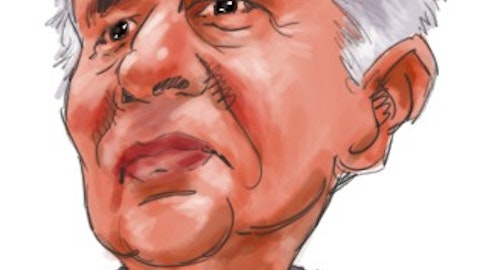The “smart money” isn’t always a bunch of investing geniuses. Institutional shareholders run into the same value traps as individual investors. They try to catch the same falling knives. Insider shareholders lose their shirts when the company goes belly-up — just like public owners such as you and me.
That said, the big investment banks and mutual fund managers are wielding much larger chunks of capital than the average investor, and insiders arguably have a better view of the company’s workings than anybody else. Therefore, it’s often a useful exercise to look at the institutional, insider, and public ownership profiles of your favorite stocks. Is the smart money supporting your investment thesis?
Yeah, like what?
Let’s take a look at some interesting examples. The companies are arranged in order of public ownership, from lowest to highest.
Ownership Examples | Infographics>
Berkshire Hathaway Inc. (NYSE:BRK.B) is a great example of a balanced ownership structure. Warren Buffett owns 20.5% of his company with another 2% of the float in the hands of other insiders. Large-scale money managers hold another 42.4%, led by household names such as BlackRock, Inc. (NYSE:BLK) and Vanguard. Activist investors don’t hold much sway here, but public shareholders and other uncategorized investors account for a healthy 35.3% stake.
That’s a strong balance between “smart money” and insider owners with huge personal stakes in the business. In many cases, 20% under the control of the dual-role chairman and CEO could be a warning sign, but not when the titles belong to proven master investor Warren Buffett. He’s earned the right to turn this particular red flag into a marker of unique strength.

Similar numbers for very different reasons
Walking up the public ownership ladder, you’ll find deeply troubled smartphone vendor BlackBerry Ltd (NASDAQ:BBRY) atop a very different structure. Here, insiders own a minuscule sliver of the company, and the public share is larger. The company is officially up for sale, but don’t expect the current roster of major shareholders to place any serious bids.
BlackBerry Ltd (NASDAQ:BBRY)’s largest owner is an investment arm of Canadian insurance company Fairfax Financial. Fairfax is supposedly looking into a buyout to top off its 10.1% interest in BlackBerry, but keep in mind that this would nearly be a merger of equals; Fairfax’s $8.3 billion market cap is not much larger than BlackBerry Ltd (NASDAQ:BBRY)’s $5.6 billion cap.
This highly volatile stock is more of a gambling chip or a risky turnaround play than a solid long-term investment. That’s why you see fewer institutional investors and more individual owners compared to a stable outfit like Berkshire Hathaway Inc. (NYSE:BRK.B). It’s easy to see why the smart money is backing away from this dangerous stock.
Would you buy a used car from this man? How about a billion-dollar company?
VirnetX Holding Corporation (NYSEMKT:VHC) is an even stranger duck. Chairman and CEO Kendall Larsen is also the mobile technology researcher’s largest shareholder, with a 16.7% stake. But while Buffett’s huge ownership serves as a genius investor’s stamp of approval, Larsen’s resume doesn’t exactly inspire supreme confidence.
This company is Larsen’s only real claim to fame, following a series of lower-level sales management positions with brand-name businesses. Moreover, his handling of this large stake often scares his fellow shareholders. For example, VirnetX shares plunged 21% on July 24, 2012, as veteran CNBC reporter Herb Greenberg dug up Larsen’s potentially troubling ownership details. Most of Larsen’s shares were tied up as collateral against some undisclosed loan, which could spell disaster if VirnetX’s shares triggered a margin call.
Larsen filed a clarifying 13D report the very same day, possibly in response to Greenberg’s concerns. As it turns out, the actual risk to common shareholders was very small because the credit line involved was just $5 million in size — hardly enough to ignite a fire sale even if Larsen had to pay off the entire thing overnight.
Larsen has since rolled the $5 million credit line over into a different loan of the same size, backed by a different bank and fewer VirnetX Holding Corporation (NYSEMKT:VHC) shares. Or maybe he closed the entire credit vehicle altogether — recent 13D filings don’t mention it anymore, with no explanation to plug the gap.





